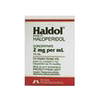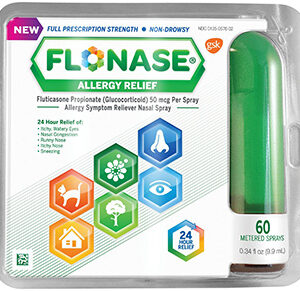Overview
Haldol, known generically as haloperidol, is a conventional antipsychotic medication. It’s primarily employed to manage symptoms associated with psychotic disorders such as schizophrenia, acute psychosis, and for the control of tics and vocal utterances in patients with Tourette’s syndrome.
Indications
The medication is indicated for use in adults and children for the treatment of a range of psychotic disorders, including schizophrenia, and is also effective in controlling the verbal and motor tics in patients with Tourette’s disorder.
Dosage Administration
The dosage of Haldol may vary depending on the condition being treated, the severity of symptoms, and the patient’s response to therapy. It is available in oral, injectable and rapid-acting forms. Physicians typically start patients on a low dose and gradually increase it if necessary.
Contraindications
Haldol should not be used in patients with hypersensitivity to haloperidol, patients with severe central nervous system depression, or in comatose states. It should also not be used in patients with Parkinson’s disease or certain conditions related to the heart.
Precautions
Caution is advised when administering to individuals with cardiovascular disease, seizure disorders, and those with a history of breast cancer, as Haldol may elevate prolactin levels. Furthermore, antipsychotics including Haldol have been associated with an increased risk of mortality in elderly patients with dementia-related psychosis.
Adverse Reactions
Common side effects include extrapyramidal symptoms (such as tremors and rigidity), drowsiness, and dry mouth. Serious but less common reactions comprise tardive dyskinesia, neuroleptic malignant syndrome, severe allergic reactions, and blood dyscrasias.
Drug Interactions
Haldol may interact with certain medications that affect heart rhythm, anticholinergics, sedatives, and other central nervous system depressants. Additionally, caution should be exercised when used concurrently with medications known to prolong the QT interval.
Specific Populations
Adjustments to dosing may be necessary for the elderly, and the safety and effectiveness in pediatric patients have not been established for all indications. In pregnancy and lactation, Haldol should only be used if the benefits justify the potential risks to the fetus or infant.
Overdosage Management
Signs of overdose may include severe extrapyramidal symptoms, hypotension, sedation, and the risk of arrhythmias. Management includes immediate cessation of the drug, close monitoring of cardiovascular status, and symptomatic treatment as necessary.
Clinical Pharmacology
Haldol affects various neurotransmitter receptors in the brain but exhibits most of its antipsychotic effects by blocking dopamine receptors, specifically the D2 receptors.
Pharmacokinetics
The pharmacokinetics of haloperidol vary by individual but generally include rapid absorption, extensive hepatic metabolism, with various metabolites excreted in the urine and feces.
Mechanism of Action
Haldol’s antipsychotic effect is primarily through its antagonist activity at dopamine D2 receptors which reduces the excessive dopaminergic neurotransmission associated with psychotic disorders.
Nonclinical Toxicology
Animal studies have suggested potential risks, particularly in relation to reproduction toxicity. Rodent studies indicate a potential for congenital malformations at high doses.
Clinical Studies
Clinical studies of Haldol in the treatment of schizophrenia have demonstrated its efficacy in reducing psychotic symptoms. It has also been shown to be beneficial in managing Tourette’s disorder symptoms.
Supplied/Storage
Haldol is available in various forms including oral concentrate, tablets, and injectables. Storage conditions vary but typically involve a cool, dry place away from light and moisture.
Patient Counseling
Patients should be counseled on the potential for side effects like drowsiness and sedation, and advised not to drive or operate heavy machinery until they understand how Haldol affects them. It is also crucial to advise patients and caregivers to monitor for signs of tardive dyskinesia and neuroleptic malignant syndrome.
Medication Guide
A medication guide should accompany the Haldol prescription, advising patients on the proper use, potential risks, and signs and symptoms that warrant immediate medical attention.
Manufacturer Information
Haldol is manufactured by several companies, and information regarding the label can be found on packaging or inside the medication packet, indicating the approved uses, dosage forms, and detailed pharmacological information.





Reviews
There are no reviews yet.